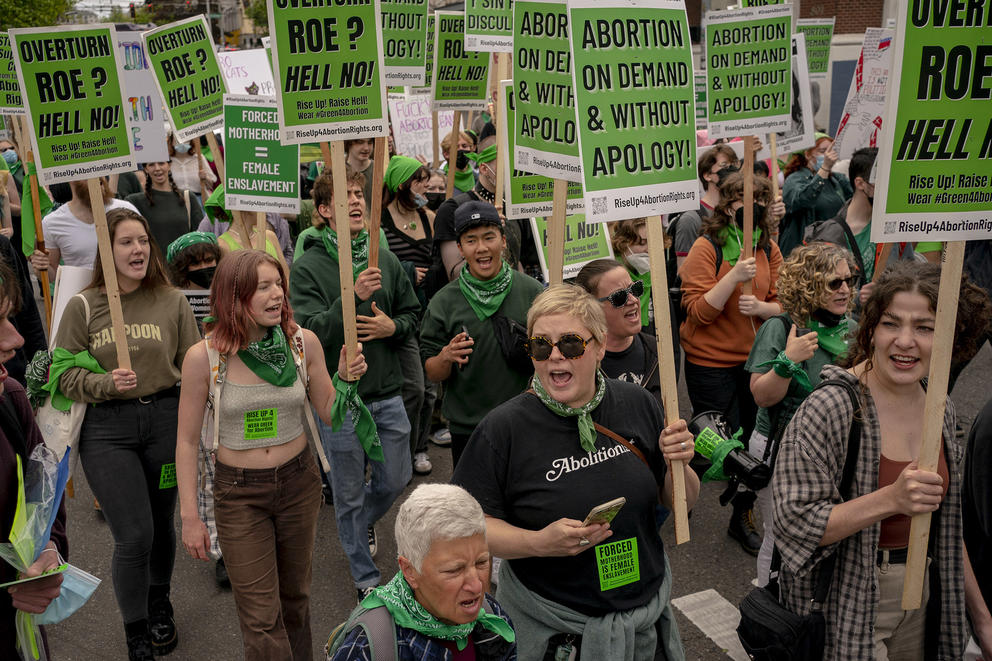As a teenager, I internalized a message underlying this story: This is how much things have changed for your generation. I thought the rights my mother fought for were normal and established, and always would be. That didn’t stop me from telling anyone who would listen about my mom standing behind an irreverent feminist banner and ending up in the same pages as Lester Bangs and Hunter S. Thompson. “Maybe your picture will be in Rolling Stone!” one of my friends wrote in my high school yearbook senior year.
She was pretty close. I spent most of my 20s working in alternative media.
But I was wrong.
Carter took little meaningful action from “The Spirit of Houston.” The Equal Rights Amendment was never ratified. And when I turned 23 myself and became a reporter, interning with the news team at The Stranger, I realized that even with Roe, the reality of abortion access was complicated.
For a story by journalist Cienna Madrid, I investigated anti-abortion centers that mimic abortion clinics, posing as a client seeking a pregnancy test. At one center in Lakewood, a friendly middle-aged woman ushered me into a room to wait for my results. After she closed the door, I thumbed through literature from groups like Focus on the Family, riddled with misinformation about abortion. I watched a video called “Choice of a Lifetime,” which pressured pregnant people to carry their pregnancies to term, then relinquish their children for adoption.
When the woman came back into the room, I was still taking notes. Between this and the questions I had asked while filling out my intake form, she had grown suspicious. She asked if I was a pro-choice mole. The same thing happened to Cienna.
But we should always be allowed to ask questions when it comes to our health. If you think you’re in a clinic and are talked out of having an abortion, you could end up parenting before you’re ready or simply internalizing the shame you’re told comes with abortion. If you live in Texas, and you’re pregnant and don’t want to be, you’ll probably need to find a way to cross state lines to get an abortion. If you live in Washington, you can get an abortion covered by state Medicaid funds. If you’re on Medicaid most anywhere else, good luck.
My own coverage showed me that while Roe v. Wade was very much still in effect, abortion access was far from uncomplicated or universal. I knew journalism could mitigate misinformation, and that if I didn’t do it, there was a good chance no one else would. I wasn’t wrong about that. Very few news outlets cover abortion through a lens of health policy, if they cover it at all.
This is why I do this work. I wrote a story in October about inequitable access to abortion pills by mail in Washington state, and another in February about how clinics are preparing for Roe v. Wade to be overturned (before Justice Samuel Alito’s draft Supreme Court ruling was leaked on May 3). After the news broke, I covered Gov. Jay Inslee’s plan to strengthen Washington's abortion laws by codifying rights into the state constitution and wrote about the implications of WA hospitals merging with religious institutions. In the coming weeks, I’ll have more stories about how policy affects access on the ground here in Washington. And I’ll keep reporting if Roe v. Wade is overturned. Because “The Spirit of Houston” wasn’t the end of gender inequality. It was just the beginning.





